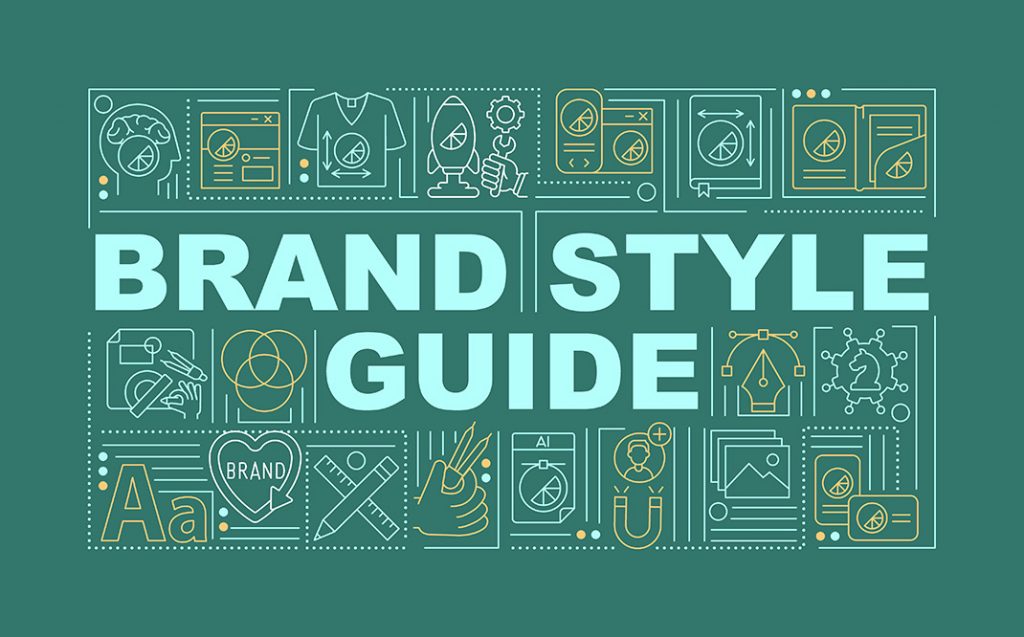
In today’s digital landscape, where brands compete for attention in a crowded marketplace, the importance of visual aesthetics cannot be overstated. Consistency in visual aesthetics plays a critical role in fostering brand recognition, trust, and loyalty, ultimately driving business growth. This blog post delves into why maintaining a cohesive design across all touchpoints—such as logos, color schemes, typography, and imagery—is essential for brands seeking to create a unified identity that resonates with audiences.
The Power of Visual Consistency
Visual consistency is the practice of maintaining a uniform look and feel across all branding and marketing materials. This includes everything from websites and social media profiles to advertisements and product packaging. When brands present a cohesive visual identity, they enhance their credibility and foster customer engagement.

Building Brand Recognition
One of the most significant advantages of visual consistency is its ability to build brand recognition. According to research, consistent branding can lead to a 33% increase in overall brand recognition. When customers encounter the same logos, colors, and typography across various platforms, they are more likely to remember the brand. This recognition can translate into trust, as consumers often equate familiarity with reliability.
For instance, consider the iconic golden arches of McDonald’s. The consistent use of this logo, along with their signature color palette of red and yellow, has made McDonald’s one of the most recognizable brands globally. This visual consistency contributes to their brand identity and helps them maintain a strong presence in the fast-food industry.
Enhancing Credibility and Trust
In a world where consumers are bombarded with choices, establishing trust is crucial for any brand. A cohesive visual identity signals professionalism and attention to detail, which can enhance a brand’s credibility. When customers perceive a brand as credible, they are more likely to engage with it and make purchases.
Take the example of Apple. The tech giant is known for its sleek and minimalist design across all its products and marketing materials. This consistency not only reinforces its brand identity but also cultivates trust among consumers who associate the brand with quality and innovation.
Boosting Customer Engagement
Visual consistency also plays a vital role in boosting customer engagement. When brands maintain a cohesive aesthetic, they create a more enjoyable and seamless experience for their audience. This can lead to increased interaction with brand content, whether it’s through social media posts, website visits, or email marketing.
For example, consider a fashion brand that consistently uses a specific color palette and typography across its Instagram feed. This consistency not only makes the feed visually appealing but also encourages followers to engage with the content, leading to higher likes, shares, and comments.
The Role of Dynamic Aesthetic Features
While consistency is crucial, it is equally important for brands to remain relevant and engaging in an ever-evolving digital landscape. This is where dynamic aesthetic features come into play. Dynamic branding allows brands to adapt their visual identity to stay fresh and exciting while maintaining their core identity.

The Impact of Dynamic Logos
Dynamic logos are a key component of dynamic branding. These logos can change based on context, user interaction, or real-time data, while still maintaining a cohesive visual language. This adaptability allows brands to resonate with diverse audiences across various platforms and touchpoints.
For instance, Google’s logo is a prime example of dynamic branding. The company frequently alters its logo to celebrate holidays, events, or significant achievements. Despite these changes, the core elements of the logo remain intact, ensuring brand recognition while keeping the brand fresh and relevant.
Benefits of Dynamic Aesthetics
Implementing dynamic aesthetic features can yield significant benefits for brands:
- Increased Engagement: Dynamic visuals capture attention and encourage interaction, potentially boosting consumer engagement with brand content.
- Enhanced Brand Perception: By conveying adaptability and innovation, dynamic aesthetics can strengthen a brand’s image as forward-thinking and responsive to change.
- Improved Storytelling: Dynamic elements allow brands to tell more complex and nuanced stories, adapting their visual narrative to different contexts and audiences.
- Personalization: Dynamic features enable brands to create more personalized experiences, tailoring visual elements to individual user preferences or behaviors.
However, it is crucial to maintain a balance between dynamism and consistency. While dynamic elements add excitement and relevance, they should still adhere to the brand’s core visual identity to ensure recognition and trust.
The Importance of Brand Style Guides
To achieve visual consistency, brands often rely on brand style guides. These comprehensive documents serve as the north star for a brand’s visual and verbal representation, ensuring that all team members and external partners adhere to established standards.

Key Components of a Brand Style Guide
A well-crafted brand style guide typically includes:
- Logo Usage Guidelines: Specifications for proper logo placement, size, and variations.
- Color Palette: Primary and secondary colors with their respective hex codes and RGB values.
- Typography: Approved fonts for headings, body text, and digital platforms.
- Imagery Style: Guidelines for photography, illustrations, and iconography.
- Tone of Voice: Instructions for maintaining a consistent brand personality in written content.
By providing explicit guidelines on these elements, brand style guides help create a cohesive visual language that strengthens brand recognition and fosters trust among customers.
Benefits of Implementing a Brand Style Guide
Implementing a brand style guide can have tangible benefits for businesses:
- Increased Brand Recognition: Consistent branding can lead to a significant increase in overall brand recognition.
- Enhanced Customer Trust: A cohesive brand identity across all touchpoints helps build credibility and trust with audiences.
- Improved Content Quality: Style guides contribute to higher-quality content by ensuring uniformity in presentation and messaging.
To maximize the effectiveness of a brand style guide, companies should regularly update the guide to reflect evolving brand elements and industry trends, make it easily accessible to all relevant team members, and provide examples and templates to illustrate proper implementation of guidelines.
Emotional Connections Through Visuals
Visual elements play a crucial role in forging emotional connections between brands and consumers. By strategically employing color, imagery, and design, brands can evoke specific emotions and resonate with their target audience on a deeper level.

The Role of Color Psychology
Color psychology is a powerful tool in emotional branding. Different hues can elicit various emotional responses, influencing consumer perception and behavior. For instance, warm colors like red and orange can evoke excitement and passion, while cool tones like blue and green may inspire trust and calmness. Brands that thoughtfully select their color palettes can effectively communicate their values and personality, creating an emotional shorthand that resonates with consumers.
The Impact of Imagery and Visual Storytelling
Imagery and visual storytelling are equally critical in building emotional connections. Compelling visuals can convey complex messages and brand narratives more efficiently than text alone. A study found that ads with strong visual imagery can increase emotional engagement significantly. By carefully curating images that align with their brand values and target audience’s aspirations, companies can create a visual language that speaks directly to consumers’ hearts.
The Importance of Typography
Typography also plays a subtle yet significant role in emotional branding. The choice of fonts can convey personality traits such as reliability, innovation, or friendliness. Consistent use of typography across all brand touchpoints helps reinforce the brand’s identity and emotional appeal.
To effectively create emotional connections through visuals, brands should conduct thorough research to understand their target audience’s emotional drivers and preferences, develop a cohesive visual identity that aligns with the brand’s core values, and use storytelling techniques in visual content to create narratives that resonate with consumers.
Taking Action
In conclusion, consistency in visual aesthetics is paramount for brands seeking to foster recognition, trust, and loyalty among their audiences. By maintaining a cohesive design across all touchpoints, brands can create a unified identity that resonates with consumers and drives business growth.

Moreover, the integration of dynamic aesthetic features allows brands to remain relevant and engaging in an ever-evolving digital landscape. Utilizing brand style guides ensures that visual consistency is maintained, while emotional connections forged through visuals can lead to increased customer loyalty and higher conversion rates.
At Sociobo, we understand the importance of building a strong brand identity through effective visual aesthetics. Our exclusive program leverages social proof aggregation to enhance your brand’s visibility and authority on social media platforms. By employing our services, you can attract genuine engagement and followers, ultimately driving your brand’s growth.
Explore how Sociobo can help you elevate your social media presence and establish a cohesive visual identity that resonates with your audience. Visit Sociobo.com today to learn more about our services and take the first step towards transforming your brand’s growth journey!






No comment yet, add your voice below!